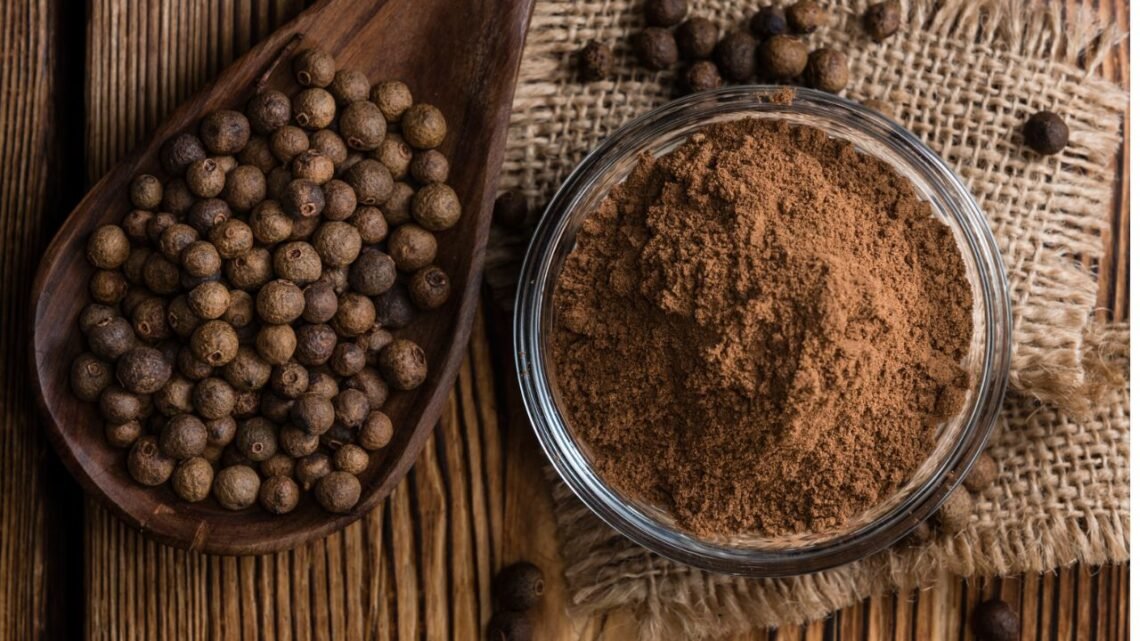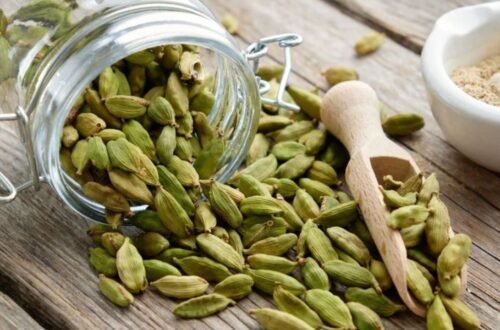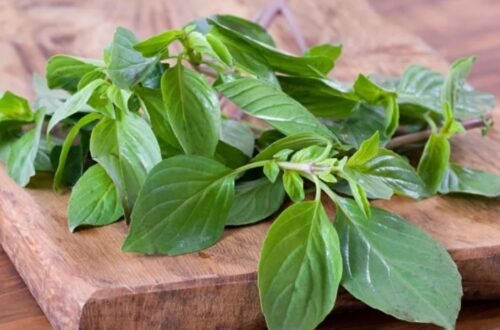Have you ever been curious about what the real power behind that simple spice that ran the season and brought a wonderful kick to jerk chicken is? Then you are probably thinking of the allspice. Its rich and warm taste often makes it hard to believe that this tropical spice was known to have some amazing health benefits to go along with having a deep, warm flavor.
In this article, we shall see everything there is to know about this wonderful aromatic powerhouse—what allspice is, what is contained in allspice, allspice medicinal and plant uses, as well as how one can use allspice to lose weight we shall even answer the question, is allspice evil? So, now that we have a better understanding of why allspice is so important, why not learn why it needs much more attention in the kitchen and health regimen?
What is Allspice?
Let’s begin with the basics. Despite the name, allspice is not a blend of multiple spices. It’s actually the dried unripe berry of the Pimenta dioica tree, a plant native to the Caribbean and Central America, especially Jamaica. These berries are small, brown, and peppercorn-like in appearance, but when crushed or ground, they release a fragrant aroma that smells like a combination of cloves, cinnamon, nutmeg, and a hint of pepper—hence the name “allspice.”
This solitary spice masquerades as many, and this is why it is present in baked goods as well as spicy meat preparations. It is central to Jamaican jerk seasoning and pumpkin pies, and it is common in Middle Eastern cuisine and American cuisine as well. Allspice is available in two basic forms whole (berries) and ground powder, which are quite different in terms of intensity and shelf life.
What is in Allspice?
That gives it its bite and medicinal properties? Its secret is that it is rich in chemical composition. Eugenol is the compound of paramount importance present in allspice, which provides various antimicrobial, analgesic, and anti-inflammatory effects, as it can be found in clove oil. But eugenol is not working in isolated.
Here’s a breakdown of what is in allspice:
| Compound | Benefits |
| Eugenol | Anti-inflammatory, antiseptic, mild anesthetic |
| Quercetin | Antioxidant, supports immune and cardiovascular health |
| Tannins | Helps digestion, anti-inflammatory |
| Gallic acid | Detoxifying, supports liver function |
| Carvacrol/Thymol | Antifungal and antibacterial properties |
These natural chemicals turn allspice into more than just a seasoning. They offer serious therapeutic potential, making them a functional food that can support health on many levels—digestive, immune, metabolic, and even hormonal.
Allspice Medicinal Uses
One of the most interesting things about this spice is the numerous allspice therapeutic applications that have been described or have been in use. Way before allspice found its use in pies and spice rubs, natives of the Caribbean and Central America used it as a natural all-purpose treatment method for a plethora of ailments.
The main property of allspice lies in the fact that it has eugenol (a natural anesthetic and antiseptic) and other substances that find synergy in combating disease and inflammation.
Key medicinal uses of allspice include:
- Pain relief—Used externally and internally to ease arthritis, sore muscles, and toothaches
- Digestive health – Stimulates digestive enzyme secretion, reduces gas, bloating, and cramping
- Respiratory support—Helps relieve cold symptoms, congestion, and chest discomfort
- Antimicrobial action – Fights harmful bacteria, fungi, and even parasites
- Menstrual pain—All spice tea is used traditionally to ease period cramps and hormonal mood swings
- Immune system booster – Rich in antioxidants that help neutralize free radicals and enhance immune response
In many cultures, all spice is still brewed as tea or applied as a poultice for treating wounds and inflammation, making it one of the oldest known medicinal spices.
All Spice Plant Uses
The uses of the allspice plant extend much farther than the dried berries of the plant. Nearly all sections of the plant come in handy as edible, medicinal and even cosmetic. It is a tree called Pimenta dioica, up to 40 ft tall, that has glossy green leaves, aromatic berries, and a solid woody trunk.
Here are some all spice plant uses:
- Berries—Used dried (whole or ground) for cooking, teas, and essential oils
- Leaves—Similar to bay leaves; used in Caribbean soups and stews
- Essential oil – Distilled from berries for use in massage oils, balms, and perfumes
- Wood—Sometimes used in smoking meats, adding a deep, earthy flavor
- Topical balms—Extracts used in salves for joint pain, bruises, or skin infections
In traditional settings, even the leaves and oil are inhaled as vapor for respiratory infections or muscle relief. Clearly, the entire allspice plant offers value.
How to Use Allspice for Weight Loss
You might not associate spices with fat burning, but many natural thermogenic agents come directly from your kitchen—and allspice is one of them. If you’re exploring how to use allspice for weight loss, the answer lies in its metabolic benefits, digestive support, and appetite-suppressing properties.
Here’s how allspice can support weight loss:
- Boosts metabolism – Eugenol slightly increases body temperature and calorie burn
- Appetite suppressant – Strong spices help curb sugar cravings and reduce overall hunger
- Balances blood sugar – Prevents insulin spikes and crashes that lead to fat storage
- Improves digestion – Better gut health means improved nutrient absorption and less bloating
- Detoxification – Mildly diuretic, helping flush excess water and waste from the body
Is Allspice Good for You?
Absolutely — yes. When consumed in culinary or moderate therapeutic amounts, all spice offers an array of health benefits that go far beyond flavor.
It can help with:
- Reducing inflammation
- Supporting immune function
- Enhancing digestion
- Fighting bacterial infections
- Boosting metabolism
- Relieving pain and cramping
- Improving circulation and hormonal balance
That said, people on blood-thinning medication should be cautious due to the presence of eugenol, which can slow blood clotting. And like all strong spices, allspice should be used in moderation, especially in essential oil form (always diluted!).
Storage and Buying Tips
To preserve the powerful oils in allspice, buy whole berries when possible and grind them fresh. Ground allspice loses potency after 6–12 months. Always store in a cool, dark, airtight container to retain freshness and medicinal value.
Final Thoughts: The Power of a Simple Berry
Whether it is amid the exotic superfoods everywhere or in an ordinary cupboard or spice rack, allspice is a reminder that in their own way, sometimes the most effective wellness tools may have already been sitting in the kitchen. No matter if you use it in a future stew, to promote gut health, or to lose a bit of weight, allspice has it all. It has a combination of flavor and medicine ingredients, thus it is a necessity in both the kitchen and the medicine cupboard.
Read Our More Blogs: What Are Herbs? Types, Uses and Health Benefits





